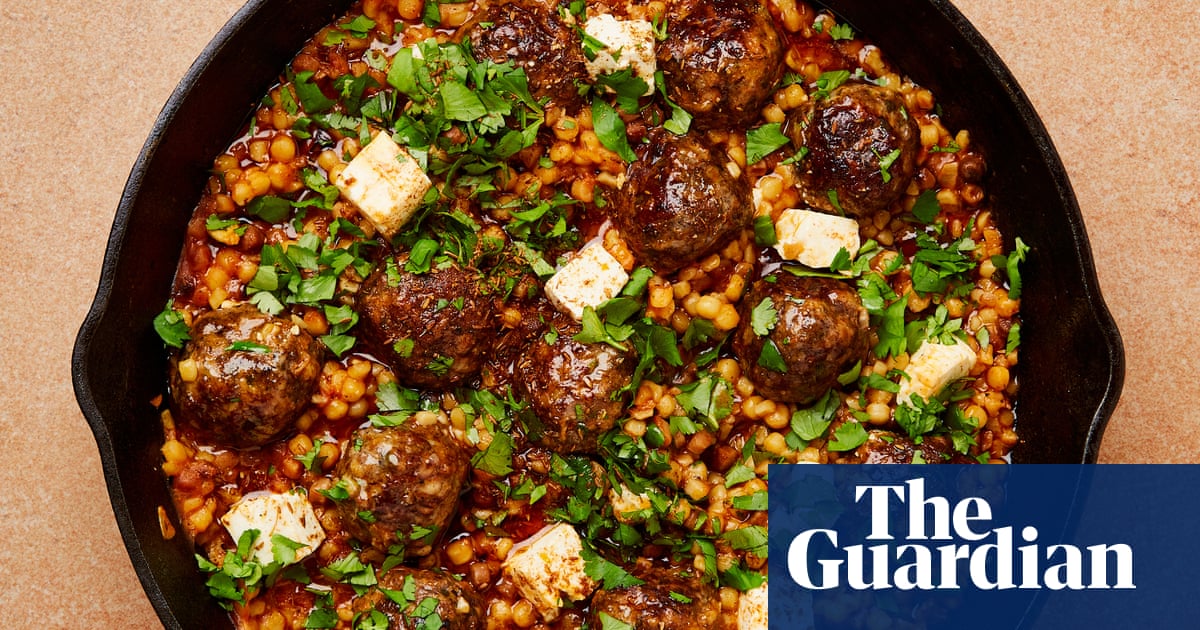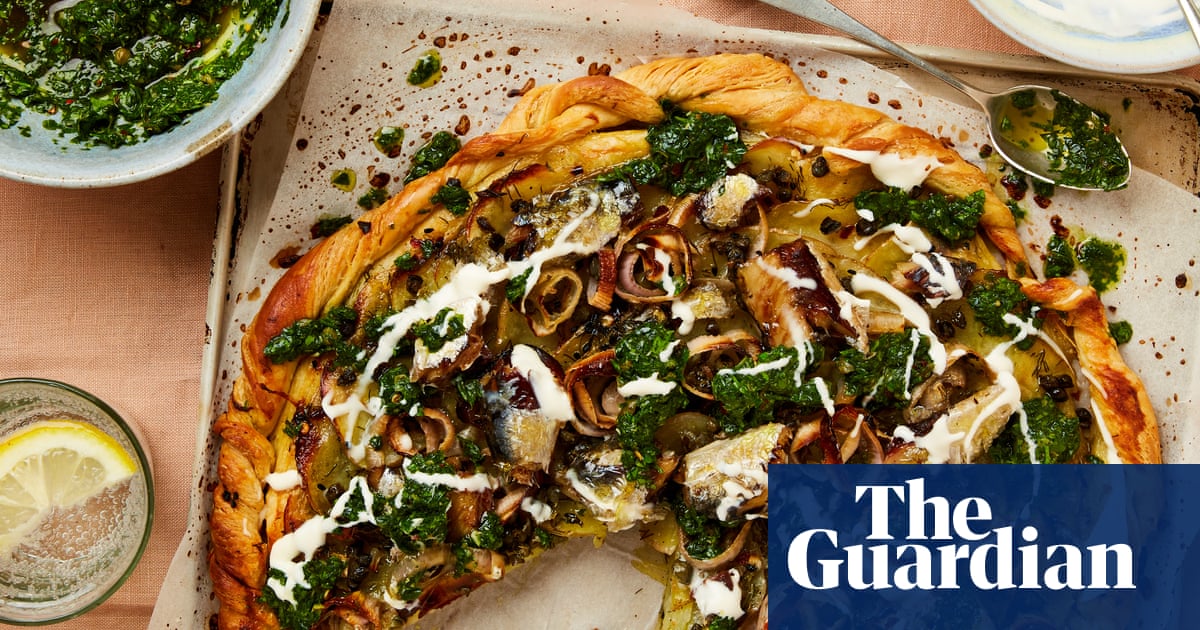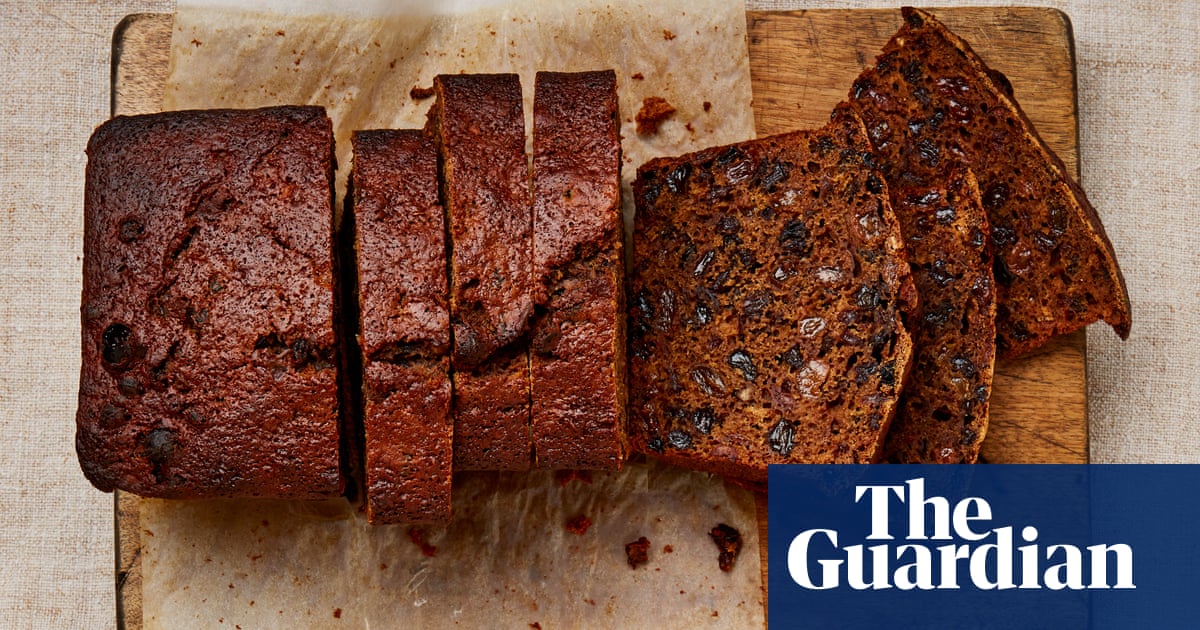
La dolce vita, or the good life, can be experienced through some of Italy’s finest ingredients: pasta, ricotta and all of the lemons. And while sitting somewhere on the Amalfi coast with a plate of pasta is up there among life’s great pleasures, you can experience something a little similar in the comfort of your own kitchen, with ingredients from the Italian pantry. Today’s dishes are inspired by my time spent in Italy over the years, greedily licking plates clean many times as a child, and even still now, as an adult.
Grilled courgettes with garlic ricotta, raisin agrodolce and crisp capers (pictured top)
“Agro” means sour in Italian and “dolce” means sweet. Agrodolce, it follows then, is a sweet-sour Italian condiment. It’s really easy and quick to make, and keeps well in the fridge, so make extra, if you like, and use as a spread in meaty sandwiches or to drizzle on top of grilled meat and roast vegetables.
Prep 20 min
Cook 35 min
Serves 4-6 as a side
120ml apple cider or red-wine vinegar
50g golden raisins
60ml honey
Sea salt and black pepper
½ tsp chilli flakes
60ml olive oil
40g capers, drained and patted dry
250g ricotta
1 garlic clove, peeled and crushed
1 lemon, zest grated, to get 1 tsp, and juiced, to get 2 tsp
800g small to medium courgettes, trimmed and cut on an angle into ½cm-thick slices
5g mint leaves (about 2½ tbsp), roughly chopped
5g basil leaves (about 2 tbsp), roughly chopped
First, make the agrodolce. Put the vinegar, raisins, honey and a half-teaspoon of salt in a small saucepan on medium-high heat and cook for eight to 10 minutes, until syrupy. Take off the heat, stir in the chilli flakes and leave to cool.
Put the oil in a small frying pan on a medium-high heat and, once hot, add a third of the capers and fry for two to three minutes, until they burst open like flowers and go crisp. Lift out with a slotted spoon and drain on kitchen paper, and repeat with the remaining capers in two batches. Take the pan off the heat and leave the oil to cool.
Put the ricotta, garlic, lemon zest and juice, and a quarter-teaspoon of salt in a small bowl, mix well, then cover and set aside.
Set a griddle pan on a high heat. While it’s getting smoking hot, put the courgettes in a large bowl, spoon in a tablespoon of the reserved, cooled caper oil, a half-teaspoon of salt and a good grind of pepper, then mix well. Working in five or six batches, grill the courgettes for two to three minutes on each side, until nicely striped with char marks, then transfer to a large bowl and leave to cool.
Spoon the ricotta on a large platter, to make a bed for the courgettes. Mix the courgettes with the chopped mint and basil, and arrange on top of the ricotta. Spoon over the reserved caper oil and the raisin agrodolce, sprinkle the fried capers on top and serve at room temperature.
UK readers: click to buy these ingredients from Ocado
Crab, saffron and tomato linguine
Making the pasta from scratch does require a pasta machine, and if you don’t have one, just ask around: you’re sure to find someone who will be delighted to lend you theirs, not least so it gets some actual use! If you want to get ahead, make the pasta the day before and refrigerate it in an airtight box, and be sure you flour it well before storing. Alternatively, buy in some linguine and put the saffron in the sauce instead. You could also swap out the crab for other fish or shellfish of your choosing.
Prep 25 min
Cook 75 min
Rest 1 hr
Serves 2-4
⅛ tsp saffron threads
200g ‘00’ flour, plus extra for dusting
2 large eggs, beaten
60ml olive oil
6 garlic cloves, peeled and thinly sliced
Fine sea salt and black pepper
1 red chilli (10g), cut in half lengthways and thinly sliced
2 celery sticks (75g), cut on the diagonal into ½cm-thick slices
100ml dry white wine
50g brown crab meat
1 large plum tomato (140g), roughly grated and skin discarded
100g white crab meat
10g (about 2¾ tbsp) parsley leaves, roughly chopped
5g (about 1½ tbsp) tarragon leaves, roughly chopped
200g cherry tomatoes, halved
2 tbsp lemon juice
For the pasta, put the saffron in a small bowl or cup, add a teaspoon of just-boiled water, and leave to infuse for 10 minutes.
Put the flour in a large bowl and make a well in the centre. Tip in the beaten eggs, the saffron and its soaking water mix to a dough with your hands. Put the dough on a clean work surface and knead for 10 minutes, until smooth, elastic and bouncy. Wrap the dough tightly, then chill for an hour (or overnight, if you want to get ahead).
Meanwhile, start the sauce. Put the oil in a small saucepan on a medium heat and, once hot, fry the garlic, stirring, for a minute, until lightly golden. Tip the mixture into a small sieve set over a small bowl, then leave both the fried garlic and flavoured oil to cool.
Set up a pasta machine, then lightly flour both the machine and a clean work surface. Divide the dough in two and, using a floured rolling pin, roll out both pieces into a 1cm-thick rectangle as wide as the machine. Working with one piece of dough at a time, roll the pasta through the machine twice at every level, starting from the widest setting and dusting with flour as you go. Stop at the penultimate setting, when the pasta is about 1mm thick. Repeat with the second piece of dough.
Cut each sheet of pasta in half widthways, so you now have four pieces, lay these out separately on a work surface, and dust generously with flour. With the shorter side of one sheet facing you, loosely roll up each piece of dough, then use a sharp knife to cut along its length into ½cm-wide strips. Repeat with the remaining sheets, then unravel all the strips of noodles and leave to rest in another generous dusting of flour.
Bring a large saucepan of well-salted water to a boil. Drop in all the pasta, cook for three minutes, until al dente, then drain, saving 50ml of the pasta cooking water.
Meanwhile, heat a tablespoon of the reserved garlic oil in a large saute pan on a medium-high heat. Add the chilli and celery, and saute, stirring occasionally, for four minutes, until soft and lightly browned. Stir in the wine, brown crab meat and grated tomato, and cook for a couple of minutes, until thickened. Ladle in the reserved pasta water, stir in the drained pasta, white crab meat, herbs, cherry tomatoes, a quarter-teaspoon of fine salt and a good grind of pepper, and toss for about a minute, until the sauce emulsifies.
Off the heat, stir in the lemon juice and remaining garlic oil, divide between four shallow bowls, sprinkle with the fried garlic and serve.
UK readers: click to buy these ingredients from Ocado
Torta della nonna
There are as many versions of this Tuscan custard tart as there are nonnas who make them. This is my take: a celebration of two of its key ingredients, namely lemons and pine nuts, that doesn’t require a blind bake.
Prep 25 min
Cook 3 hr 45 min
Cool and chill 2 hr
Serves 12
For the custard
150ml double cream
550ml whole milk
1 lemon – zest finely grated, to get 1½ tsp, then juiced
2 eggs plus 2 egg yolks (save the whites for another use)
110g caster sugar
30g ‘00’ flour
30g cornflour
3 tbsp lemon curd (homemade or shop-bought)
For the pastry
300g ‘00’ flour, plus extra for dusting
1 tsp baking powder
120g caster sugar
150g fridge-cold unsalted butter, cut into 1cm cubes, plus a little extra for greasing the tart case
1 egg plus 1 egg yolk
30g pine nuts, toasted and roughly chopped
1 tbsp thyme leaves, roughly chopped
1 lemon – zest finely grated, to get 1½ tsp, then cut into 12 wedges
For the honey syrup
30g runny honey
1 tbsp lemon juice
1 tsp thyme leaves, chopped
30g pine nuts, toasted and roughly chopped
1 tbsp icing sugar, for dusting
To make the custard, put the cream, milk and lemon zest in a medium saucepan and bring to a simmer on a medium-high heat.
Meanwhile, vigorously whisk the eggs, egg yolks and sugar in a large bowl for about two minutes, until pale. Add the flour and cornflour, and whisk for a couple of minutes more, until the mix is fluffy. When the cream mix starts to steam, slowly pour it into the egg bowl, whisking quickly and constantly, then pour the lot back into the saucepan. Put the pan on a medium heat and cook, stirring constantly, for three or four minutes, until the custard starts to steam and thicken – take care not to scramble it. Pour the custard into a deep tray, leave to cool, then put in the fridge to chill.
For the pastry, pulse the first four ingredients in a food processor until the mix resembles breadcrumbs. Add the remaining five ingredients bar the lemon wedges, pulse three or four times until combined, then tip on to a clean work surface and, using your hands, bring it together into a smooth, uniform dough. Cut off a third of the dough, then wrap both pieces and chill to rest for at least an hour.
Heat the oven to 210C (190C fan)/410F/gas 6½. Lightly grease a 24cm tart tin with a removable base, dust the inside lightly with flour, then put it on a baking tray. Take the custard out of the fridge, add the lemon curd and blitz smooth using a stick or regular blender.
Take the larger piece of dough out of the fridge. Dust a work surface with flour, then roll out the dough into a rough 28cm-diameter circle. Using a flat baking tray or dough scraper, carefully lift up the dough, drape it over the tart tin and press gently into the edges. This pastry is delicate but forgiving, so patch up any holes with offcuts of dough. Pour the custard mix into the tart case and smooth out the top.
Roll out the second piece of dough into a 25cm-diameter circle, and prick gently all over with a fork. Lay this on top of the tart, so it covers the edges, then gently roll the rolling pin over the edges of the tart tin, to seal. Trim off any overhang.
Bake the tart for 40-45 minutes, until golden on top, then remove and put on a rack to cool a little before unmoulding.
Meanwhile, make the syrup. Put the honey in a small saucepan on a medium-high heat and cook vigorously for three to five minutes, until deeply golden. Off the heat, stir in the lemon juice and thyme, then leave to cool. Once the tart is out of its tin, brush the syrup over the top, scatter over the pine nuts and leave to cool completely.
Once cool, dust the tart with icing sugar and serve with the lemon wedges.












